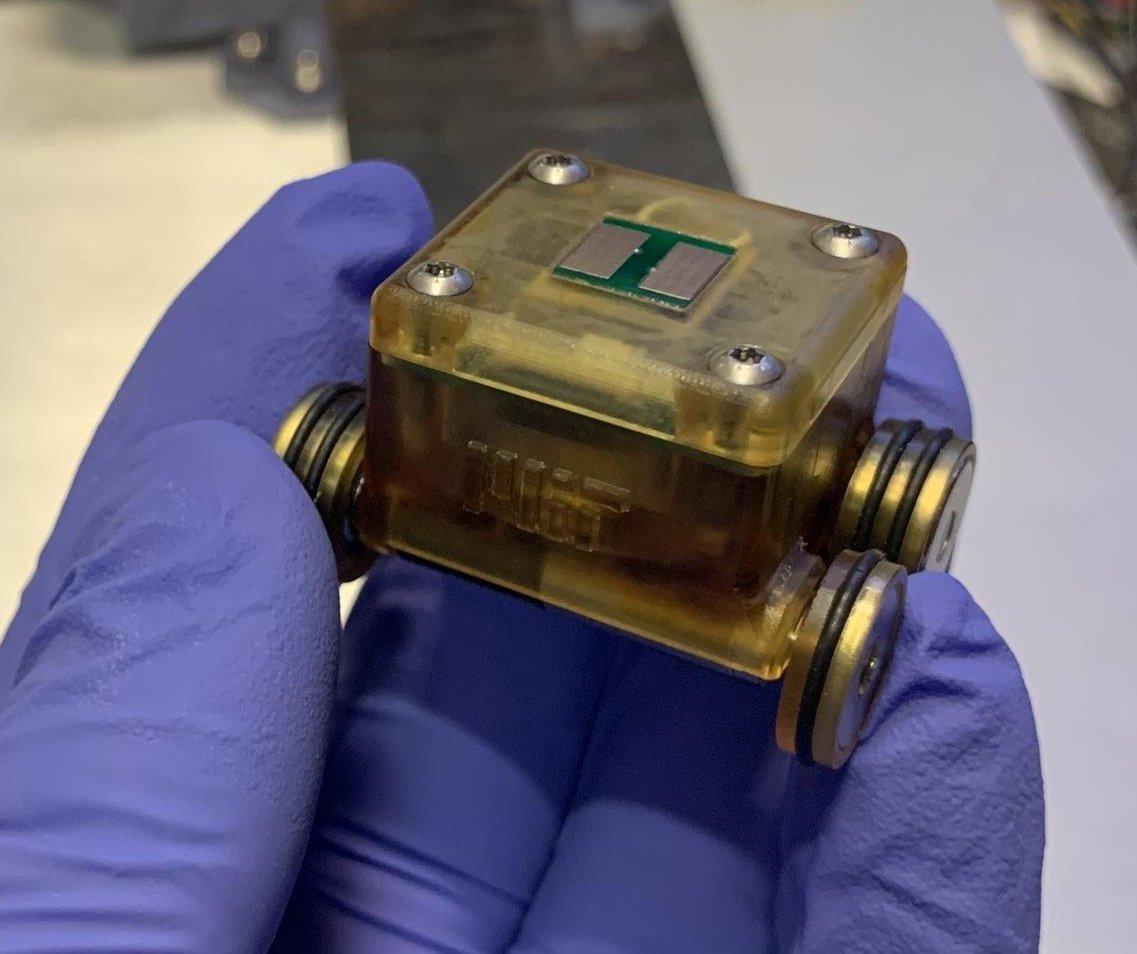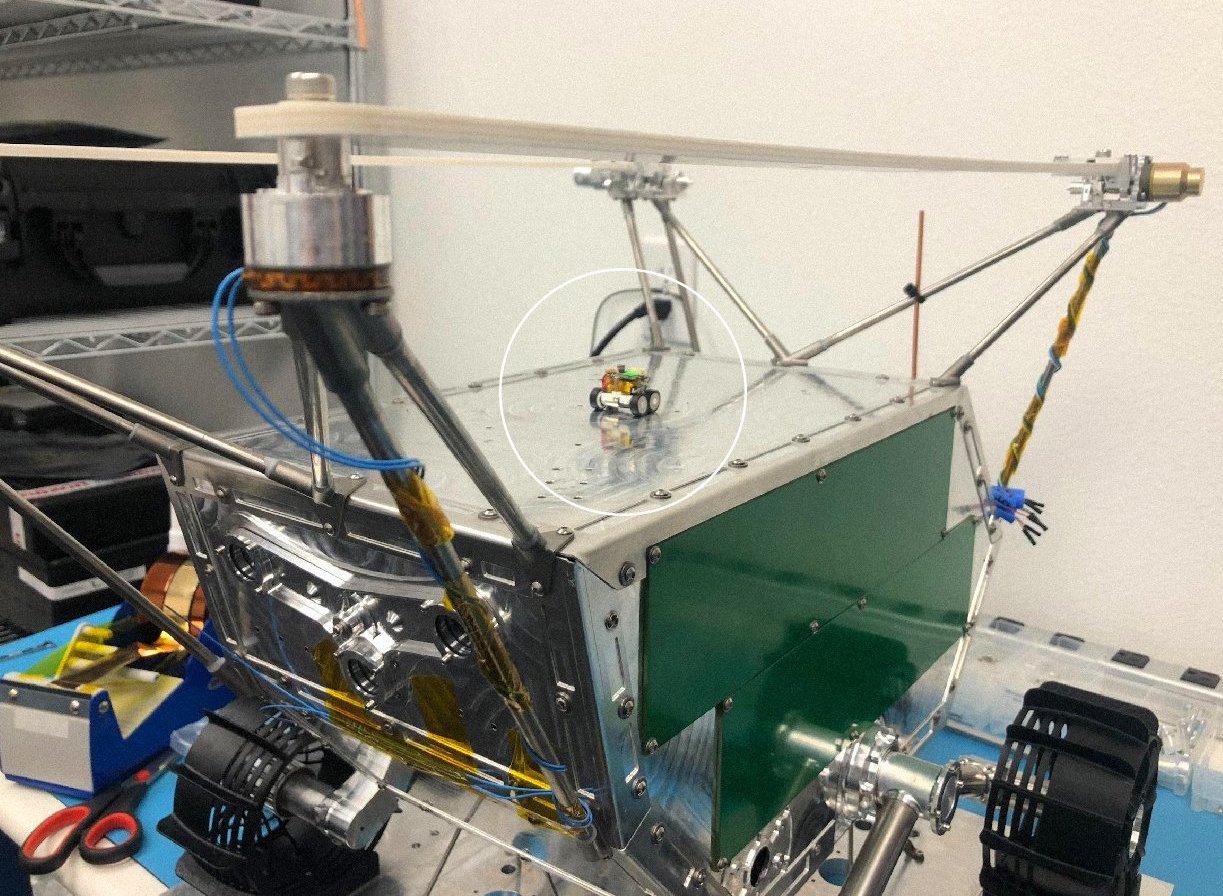Content Warning
"The large-scale weaponization of space appears to be imminent as competition in orbit heats up between the U.S. and its adversaries."
Content Warning
"The large-scale weaponization of space appears to be imminent as competition in orbit heats up between the U.S. and its adversaries."
Content Warning
This new JWST image shows a jet shooting out from a newborn star; the colors indicate infrared emission from hydrogen, carbon monoxide & dust.
JWST is so sensitive that it also captured many distant background galaxies, including one at the tip of the tornado & others shining right through it.
https://webbtelescope.org/contents/news-releases/2025/news-2025-112 #space #science #art
Content Warning
The ALMA observatory found a whole nest of mysterious, turbulent filaments swirling around in the chaos near the center of our galaxy -- possibly connected to the star clusters & the supermassive black hole lurking nearby.
https://www.almaobservatory.org/en/press-releases/alma-discovers-space-tornadoes-around-the-milky-ways-core/ #space #astronomy #science
Content Warning
Content Warning
Content Warning
The upper component of this interacting galaxy group has two nuclei that appear to be connected and in the early stages of merging along with trails of blue super star clusters. The lower component of the group is a single large spiral galaxy with its own star clusters.
Credit: NASA, ESA, and the Hubble Heritage Team
Source: https://hubblesite.org/contents/media/images/2009/18/2542-Image.html
Content Warning
This comet won't be seen again for another 600,000 years.
https://www.esa.int/Science_Exploration/Space_Science/Solar_Orbiter #space #science #art
Content Warning
A new report reveals that Barnard's star (closest single star to the Sun) has a whole system of planets.
People have been seeking planets there since the '60s. Now we've found them--four rocky worlds, 1/4 the mass of Earth, in tight orbits around their tiny red star.
https://noirlab.edu/public/news/noirlab2510/ #space #science #nature
Content Warning
Content Warning
Content Warning
Content Warning
— Rich Terrile, JPL scientist and member of the Voyager imaging team
Content Warning
This is what last night's lunar eclipse looked like from the Blue Ghost lander's perspective on the Moon. Amazing!
https://www.flickr.com/photos/fireflyspace/54386246629/in/dateposted/ #space #science #art #tech
Content Warning
But the discovery of Andromeda XXXV, just one-millionth the size of our Milky Way, offers serious clues about how coherent structures form & survive in a chaotic universe.
https://news.umich.edu/small-faint-and-unexpected-in-a-lot-of-different-ways-u-m-astronomers-make-galactic-discovery/ #science #space #nature
Content Warning
Content Warning
One of the affected divisions is the Office of Technology, Policy, and Strategy (OTPS), whose intended purpose "was to provide 'data- and evidence-driven technology, policy, and strategy advice' for NASA. It has worked on topics such as space sustainability and space solar power studies."
Content Warning
#scifi #sciencefiction #art #scifiart #fantasy #space #cyberpunk
Content Warning
Content Warning
And now she's the lead power subsystem engineer for Voyager. In the same quiet, dedicated way, she's the one making the tough calls that'll help keep *them* alive for years to come.
https://gizmodo.com/nasa-shuts-off-voyager-science-instrument-more-power-cuts-ahead-to-keep-both-probes-going-2000572202 #space
Content Warning
Intuitive Machines' Athena lander is set to touch down on the Moon carrying the "Grace" Hopper robot, Yaoki 360° rover, and MAPP prospecting rover.
Plus a micro-rover, AstroAnt, that will ride around on top of the MAPP rover!
https://www.intuitivemachines.com/im-2 #space #science #nasa #tech

